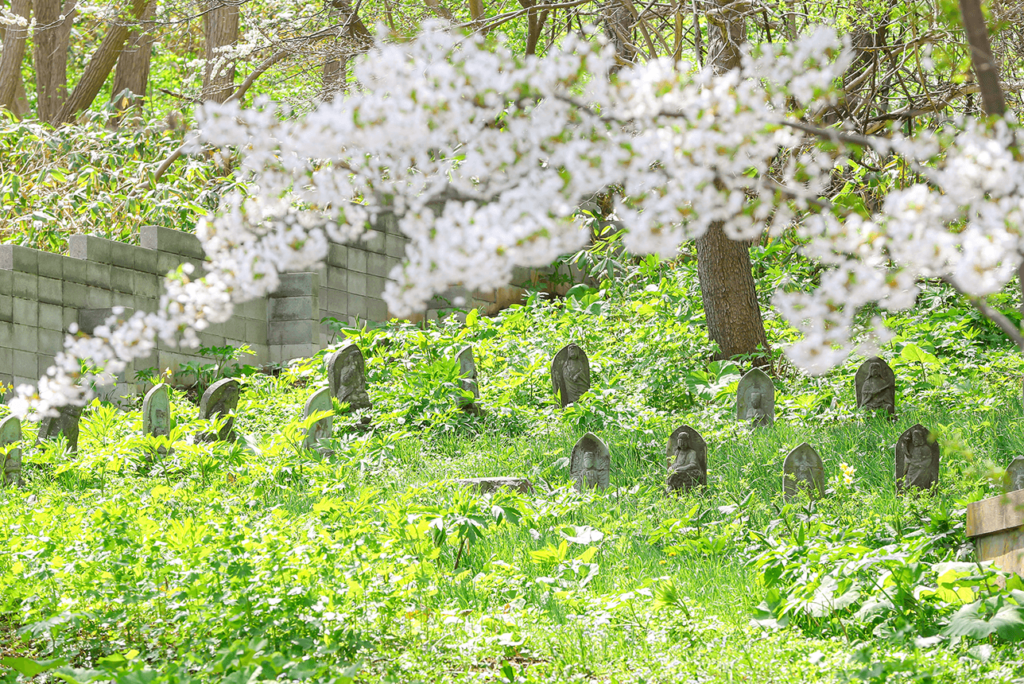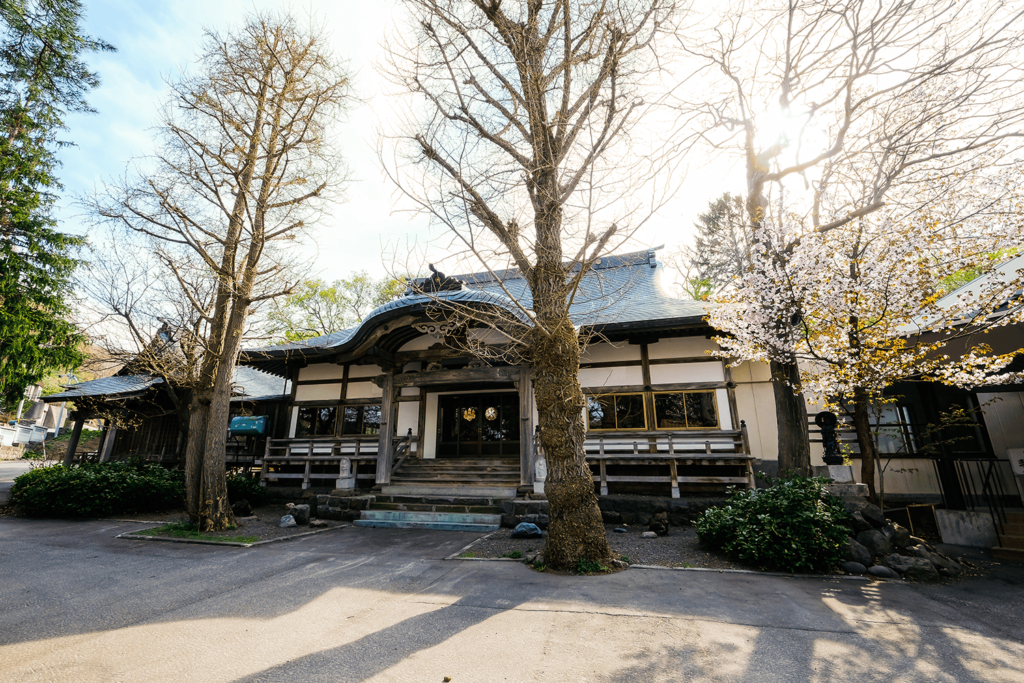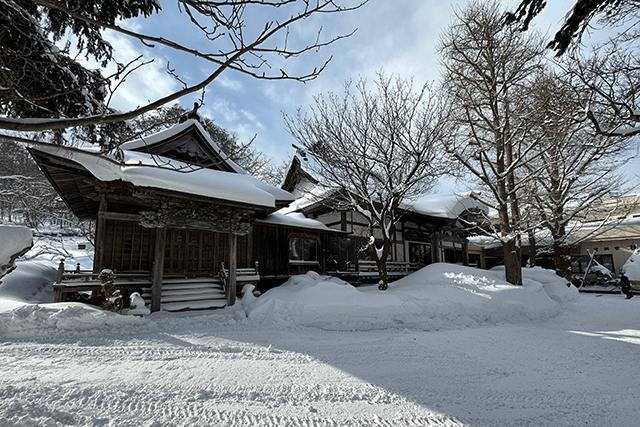About Tokugenji

Soto Zen
“Tokugenji is a temple of the Soto Zen tradition.”
Principal Image
Head Temples
History of Soto Zen
urpose and Teaching of Soto Zen
Soto Zen relies on the authentic Buddhist teachings passed down from Shakyamuni Buddha to successive patriarchs. Through the practice of zazen (sitting meditation), we aim to recognize the tranquility of body and mind attained and embody the essence of Buddha, living in accordance with right conduct.
There is a Zen saying: “gyoji-zaga,” which means walking, standing, sitting, lying down. This emphasizes maintaining a stable mind through zazen in every aspect of daily life, fostering peaceful and serene days, and finding value in our existence as human beings.
Dogen Zenji taught that when we are born into this world, we are endowed with the same mind as Buddha, known as “Buddha Mind.” This encompasses cherishing not only our own lives but also the lives of others and cultivating a compassionate heart toward others.
Let us endeavor to cherish each action in our daily lives with a peaceful mind under the guidance of the teachings of Shakyamuni Buddha and the patriarchs.”
Principal Image
Head Temples
History of Soto Zen
Purpose and Teaching of Soto Zen
Soto Zen relies on the authentic Buddhist teachings passed down from Shakyamuni Buddha to successive patriarchs. Through the practice of zazen (sitting meditation), we aim to recognize the tranquility of body and mind attained and embody the essence of Buddha, living in accordance with right conduct.
There is a Zen saying: “gyoji-zaga,” which means walking, standing, sitting, lying down. This emphasizes maintaining a stable mind through zazen in every aspect of daily life, fostering peaceful and serene days, and finding value in our existence as human beings.
Dogen Zenji taught that when we are born into this world, we are endowed with the same mind as Buddha, known as “Buddha Mind.” This encompasses cherishing not only our own lives but also the lives of others and cultivating a compassionate heart toward others.
Let us endeavor to cherish each action in our daily lives with a peaceful mind under the guidance of the teachings of Shakyamuni Buddha and the patriarchs.”

History
| Japanese calendar | AD | matter |
| Bunku 2 | 1862 | The 23rd abbot of Hogenji Temple, the oldest Soto Zen temple in Hokkaido, founded in 1469 by the Matsumae clan. With the permission of the Shogunate, Tetsuzi Tokuzui, the 23rd abbot of Hogenji, the oldest Soto Zen temple in Hokkaido founded by the Matsumae clan in 1469, asked the 22nd abbot of Hogenji, Sozan Taito, to open the temple as a preaching hall in the Yoshiwara area near the Shioya coast with the efforts and support of Magoshichi Tabata, the manager of Unjoya who had the contract of Oshoro place at that time. |
| Bunku 3 | 1863 | The temple was officially named Taiheizan Tokugenji Temple. Along with Zen-Gen-ji in Furuhira and Sogen-ji in Ishikari, it is called one of the three Hokkaido Kaitaki-Sangen-ji temples. |
| Meiji 30 | 1897 | The temple was moved to the present location because the original precincts were too small and the area was a prostitute district.
The main hall, Ryujindo (dragon shrine), and the koryu (temple) were completed. |
| Showa 62 | 1987 | The old koryu was dismantled and a new koryu with an ossuary was completed. |
| Heisei 5 | 1993 | Replacing the entire roof of the main hall with durable copper sheets |
| Heisei 7 | 1995 | Installed a stone wall next to the gate |
| Heisei 11 | 1999 | Statue of Bodhisattva Umehana Kannon (Goddess of Mercy) built in the precincts of the temple. |
| Heisei 12 | 2000 | Stone walls were built at the back gate and on the Tokugenji slope. |

Nishin Fishing and Kitamae Ship
In addition, from the middle of the Edo period to the end of the Meiji period, commercial vessels called Kitamae-bune were active in Japan. Kitamae-bune ships conducted business from Osaka and the Kinki region to various ports in the Seto Inland Sea and the Sea of Japan, bringing in goods and daily necessities for cultivation in Hokkaido and shipping out herring and other marine products from Hokkaido. Kitamae-bune shipowners had their own information network and earned huge profits on a single voyage, but because they were wooden vessels with single sails, they were fraught with great danger. For this reason, ema (votive picture tablet) votive tablets were offered at local shrines and temples related to the Kitamae Ship to pray for safety at sea.
In addition to the boat ema, Tokugenji Temple also has other cultural assets that are believed to have been brought by the Kitamae-bune. The country of Japan was in search of herring from the Ezo region for use as fertilizer, which was purchased even at the cost of “kinpi,” or “gold fertilizer. Among them, the area from Cape Kamui including Otaru to Atsuta, Ishikari City continued to have abundant herring catches after the Meiji Era and was called “unparalleled herring fishing ground in the whole Hokkaido”. In Shioya, herring fishing has been prosperous, and it has brought a lot of profits to the master, fishermen, and people involved in herring fishing, and contributed to the establishment and development of Tokugen-ji Temple.
In addition, from the middle of the Edo period to the end of the Meiji period, commercial vessels called Kitamae-bune were active in Japan. Kitamae-bune ships conducted business from Osaka and the Kinki region to various ports in the Seto Inland Sea and the Sea of Japan, bringing in goods and daily necessities for cultivation in Hokkaido and shipping out herring and other marine products from Hokkaido. Kitamae-bune shipowners had their own information network and earned huge profits on a single voyage, but because they were wooden vessels with single sails, they were fraught with great danger. For this reason, ema (votive picture tablet) votive tablets were offered at local shrines and temples related to the Kitamae Ship to pray for safety at sea.
In addition to the boat ema, Tokugen-ji Temple also has cultural properties that are believed to have been brought by the Kitamae-bune.




























